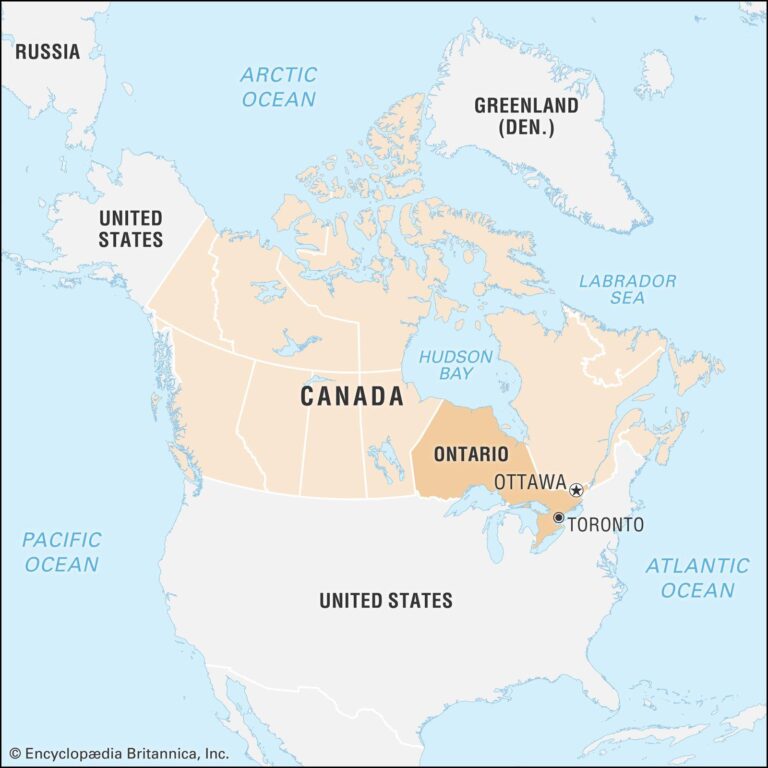In the latest Netflix thriller “Wayward,” viewers are transported to the quaint, idyllic town of Tall Pines, Vermont-at least on screen. However, behind the scenes, the picturesque setting is actually a clever cinematic illusion. The series was predominantly filmed in Ontario, Canada, where local landscapes and skilled production teams transformed familiar Canadian locales into the fictional American town. This strategic choice not only underscores the versatility of Ontario’s film industry but also highlights the growing trend of Canadian provinces doubling for U.S. locations in major streaming productions. Our report delves into how Ontario’s diverse scenery, combined with meticulous production design, brought Tall Pines to life and explores the broader implications for the region’s growing role in international film and television projects.
How Ontario’s Diverse Landscapes Crafted the Authentic Look of Tall Pines Vermont
Ontario’s vast and varied geography provided an ideal canvas for recreating the quaint, rustic charm of Tall Pines, Vermont in Netflix’s Wayward. From dense, towering forests to serene lakeshores, the province’s natural settings offered filmmakers the perfect blend of rugged wilderness and idyllic small-town vibes. Locations in Muskoka and Algonquin Park stood in for Vermont’s iconic woodlands, with massive pine trees and winding trails enhancing the series’ atmospheric authenticity. Production designers carefully selected these spots to echo Vermont’s hallmark landscape, ensuring viewers would feel fully immersed in the imagined environment without a hint of Canadian geography.
Beyond the forests, Ontario’s subtle seasonal shifts added another layer of realism to the show’s setting. The crisp autumn foliage-characterized by vibrant reds and oranges-mirrored Vermont’s famous fall colors, crucial for establishing the small town’s cyclical charm. The presence of quaint rural roads, rustic cabins, and modest town centers across Southwestern Ontario provided versatile backdrops that seamlessly doubled as Vermont’s residential and communal spaces.
- Muskoka Region: Dense pine forests and lakeside views
- Algonquin Park: Rustic trails and wildlife habitats
- Southwestern Ontario: Quaint rural towns and farmlands
| Location | Ontario Feature | Vermont Equivalent |
|---|---|---|
| Muskoka | Majestic pine forests | Green Mountains |
| Algonquin Park | Serene hiking trails | Appalachian wilderness |
| Stratford | Historic town center | Woodstock village |
Behind the Scenes Techniques that Transformed Canadian Locations into a New England Town
Transforming Ontario’s distinct landscapes into the quintessential charm of Tall Pines, Vermont, required a meticulous blend of practical effects, set design, and digital magic. Production designers sourced authentic New England architectural elements such as clapboard siding, brick chimneys, and traditional lampposts, which were carefully integrated into existing Canadian structures. Trees native to the boreal forests were subtly swapped with white pines and maples through selective planting and digitally enhanced foliage, creating the rich seasonal palette iconic to Vermont’s towns. Meanwhile, streets were redressed with authentic road signs, mailboxes, and utility poles, ensuring the atmosphere resonated with local New England detail down to the smallest props.
Several innovative techniques were key in achieving this seamless illusion:
- Camouflage and Masking: Strategic set dressing concealed Canadian road markings and signage, replaced digitally or physically with Vermont equivalents.
- Seasonal Effects: The use of artificial snow and leaf overlays allowed scenes set in fall and winter to reflect New England’s famed seasons.
- Color Grading: Post-production adjustments emphasized warm autumnal shades and muted winter tones characteristic of Tall Pines.
- Local Sourcing: Props and vehicles were sourced from U.S. suppliers or modified to meet New England standards, avoiding visual inconsistencies.
| Technique | Ontario Element Modified | New England Substitute |
|---|---|---|
| Set Dressing | Canadian street signs | Historic Vermont signs |
| Digital Foliage Editing | Boreal spruce trees | White pines & maples |
| Props Sourcing | Local delivery trucks | New England/postal delivery trucks |
| Seasonal Effects | Green landscapes | Fall foliage & snow overlays |
Location Scouting Insights and Tips for Filmmakers Planning Cross-Border Productions
Cross-border productions demand meticulous planning, particularly when it comes to location scouting that can convincingly double for another region. In the case of Netflix’s Wayward, Ontario’s versatile landscapes were expertly utilized to recreate the rustic charm of Tall Pines, Vermont. Key to this success was a focus on finding areas with similar topographical features-dense forests, rolling hills, and classic New England style architecture-which helped maintain the authenticity of the setting without compromising logistical efficiency. Working closely with local municipal authorities and production offices in Ontario streamlined permits and minimized shooting delays, a crucial factor when juggling complex production timelines across borders.
Filmmakers planning similar ventures should consider the following strategic tips:
- Prioritize visual consistency: Leverage digital scouting tools and high-resolution imagery to identify landscapes that can mirror the intended location’s natural and architectural elements.
- Engage local experts: Collaborate with regional location managers and scouts who possess insider knowledge of hidden gems and versatile sites.
- Navigate regulations early: Understanding cross-border legal frameworks, including work permits and environmental restrictions, will facilitate smoother production schedules.
- Optimize logistics: Aim to cluster shooting days geographically to reduce travel time and costs.
| Challenge | Ontario Advantage | Production Benefit |
|---|---|---|
| Climate Variability | Similar seasonal patterns to Vermont | Authentic setting year-round |
| Architectural Match | Historical towns with colonial-style buildings | Reduced set dressing costs |
| Permitting | Streamlined film-friendly regulations | Faster approvals & fewer delays |
The Way Forward
In shedding light on the clever use of Ontario’s landscapes to depict Tall Pines, Vermont, Netflix’s ‘Wayward’ exemplifies the art of cinematic illusion and the practical considerations behind filming locations. This strategic choice not only showcases the versatility of Canadian settings but also reflects the ongoing collaboration between the entertainment industry and local regions seeking to boost tourism and economic activity. As viewers become increasingly curious about the real places behind their favorite shows, productions like ‘Wayward’ highlight how geography and creativity intertwine to bring stories to life on screen.




